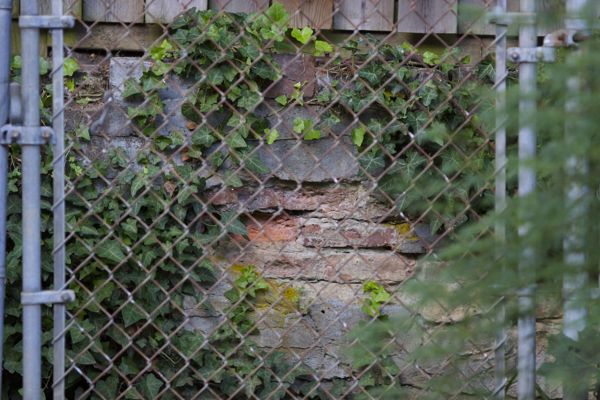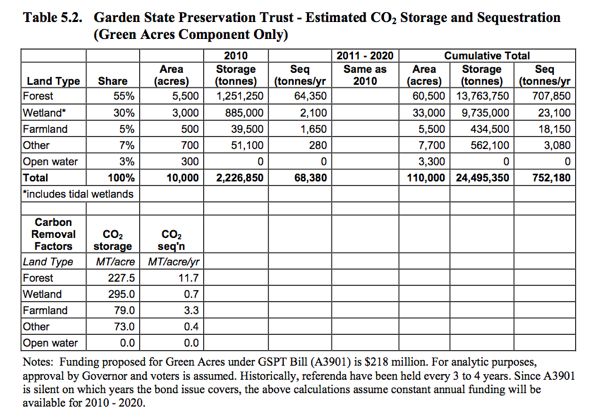Archive
Why Is Koch Brothers’ Behind the Scenes Political Action In NJ Not a Huge Scandal in NJ Media and Political Circles?
Important Updates below
I’ve really been disgusted by the failure of NJ media to write about what amounts to a huge example of corruption of democracy, a story on the national stage that is playing out right in their own backyards.
I mean, take a look at what the Koch Brothers’ billions recently have bought in NJ:
1) A faux “grassroots” group, Americans for Prosperity (AFP), the shock troops for a political right wing and corporate agenda;
2) Out of virtually nowhere, the unknown and extremist AFP has become the third largest political contributors in Trenton, behind the NJEA and AFL-CIO;
3) virtually singlehandedly, the AFP worked to provide political cover to support Gov. Christie’s kill of the Regional Greenhouse Gas Initiative (RGGI), the northeastern state’s market based emissions cap and trade program;
4) AFP manufactured the Republican US Senate candidacy of Steve Lonegan, a marginal and extreme political figure in NJ;
5) AFP activists met personally with Gov. Christie in the State House;
6) Gov. Christie bragged that the Koch’s and other billionaire’s begged him to run for President in 2012.
7) AFP’s paranoid delusions of a UN plot to seize US sovereignty intimidated and forced several local governments to rescind prior support for local popular environmental “sustainability” initiatives;
8. AFP’s paranoid delusions of government conspiracy played a significant role in shelving Gov. Christie’s own State Economic Development Plan, a business community supported replacement for the land use oriented State Development and Redevelopment Plan.
9) I suspect AFP, Tea Party and/or Koch money or support was behind the “Stop FEMA Now!” “movement”, but I can’t prove it. That group provided political support and cover for politicians to attack FEMA, ultimately forcing FEMA to back off significantly from their originally proposed flood risk maps. AFP also opposed the bailout.
10) A few years back, there were press reports of rumors that Christie had met with the Koch’s before he killed RGGI (a “smoking gun” on RGGI) and diverted over $800 million of RGGI and Clean Energy Fund money, but I don’t recall if those meetings are confirmed. (also recall that Christie killed the ARC tunnel to Manhattan a year BEFORE Wisconsin, Ohio, and other Republican Governor’s began to do similar things and reject federal transportation funds.)
There are also likely links between AFP and ALEC – the American legislative Exchange Council. ALEC is active in NJ.
That is one hell of a lot of political influence, on high profile issues, in a very short period of time, from a completely opaque, unknown, and extreme political action group (and the issues and actors have a high profile national context).
I’ve worked on public policy issues in NJ for almost 30 years, and I can assure you that such a profile and such a lack of accountability is unprecedented.
Who the hell is AFP? Where do they get their money?
The lack of NJ media coverage is even stranger, given the facts that: 1)AFP has won battles on nationally prominent global warming issue, 2) AFP is backing a nationally prominent political figure rumored to be a leading 2016 Republican Presidential candidate, 3) this is all happening at a time when the national think tank reports and national media are reporting investigative exposes of the dirty deeds of the Koch Brothers, who founded AFP (see this and this and this).
I find impossible to chalk up the lack of coverage of Koch and AFP to the fact that every editor and reporter is just missing the story – and just can’t connect these dots.
There must be other forces and factors influencing NJ media decision not to cover the Koch manipulation story and the AFP’s sudden and shocking rise to influence.
I can think of at least 2 explanations:
1) they are on the Christie bandwagon, and they know that this story would hurt Christie; or
2) they are trolling for a Koch Sugar Daddy buyout.
But why are Democrats not all over this politically?
Could they be corporate whores too?
Perhaps Booker’s funders and the Democratic party power brokers would know.
Update #1: 7/8/13 – Herb Jackson at the Record swings and misses, with a puff piece on Lonegan. Koch money and AFP are buried, and briefly mentioned in passing. Other than a similarly brief mention of the UN plot and a desire to shut government down, it mainstreams Lonegan. Unforgivable, given all the stuff out there on the Koch’s, AFP, & Tea Party astroturfing corporate front group BS. This was the Record’s political profile story on the Republican primary candidates for US Senate, written by the Record’s DC correspondent, so this was not a set up for a real investigative story on Koch, AFP, Lonegan and Christie that we need. – end update 1
[Update #2: 7/8/13 – Holy shit, Herb Jackson was all IF Stone compared to the Star Ledger story just published “Lonegan calls out Pallone, denounces Obamacare“. They used 3 reporters and a photographer to cover a Lonegan stunt – look at the picture, he’s all alone – and then they write a Lonegan press release. Shameful. Maybe they rally are looking for a Koch Sugar Daddy bailout. What else could explain this despicable “journalism”? No way this could be handing Lonegan rope to hang himself. end update 2 ]
Find the Climate Waldo Hidden By the Weenies
Keep It Green Ignores Climate Change
Fear and Loathing in the Garden State
The Fat Man in the Front Office Casts a Wide Shadow
The successful Koch Brothers’ funded NJ campaign by Americans for Prosperity to provide cover for Gov. Christie to kill RGGI is the model for the current ongoing national preemptive attack, targeted on upcoming EPA regulations announced by President Obama. With Christie, Koch’s, and climate change in the national media spotlight, will some intrepid reporter connect the dots? ~~~ Bill Wolfe
This is getting to be like shooting fish in a barrel.
Lies and errors of omission can be as important – sometimes more so – than those of commission.
Earlier this week, I wrote about how the “Forest Stewardship” bill failed both rural and urban NJ by failing to even consider urban forestry and “afforestation”, i.e..increasing the amount of NJ’s forested lands, as opposed two cutting them down.
Prior to that, I ranted about glaring errors by the Keep It Green Coalition in advocating for a dedicated [new] source of open space funding.
Today, I blend the two issues – which is especially fitting, as there is significant overlap in the member groups supporting KIG and the Forest Stewardship bill – and a similar pattern of omissions and mistakes as well.
Most of the people loosely considered “environmentalists” – conservationists, preservationists, land trusts, watershed groups, urban environmental justice groups, coastal advocates, you name it – strongly agree that climate change is by far our most pressing and #1 “environmental” problem.
So with that in mind, take a peek at the table above, which is from DEP’s 2009 Report and recommendations on how to implement and meet the deep greenhouse gas emission reduction goals set by the 2007 Global Warming Response Act.
That Report quantifies and connects the dots between forests, open space/Green Acres land preservation, carbon storage and sequestration, and climate change (look at the table above – note how it also cited then pending legislation).
So, given the priority of climate change and the DEP’s technical analysis, ask yourself why the KIG website and the KIG Report supporting the initiative: A Legacy of Green: Celebrating 50 Years of the Green Acres Program both fail to even mention climate change?
Here is the KIG summary of environmental and health benefits derived from Green Acres, which totally ignore climate change and carbon sequestration:
- Environmental and Health Benefits
- For every 10% increase in forest cover, water treatment and chemical costs decrease by 20%. 10
- In one urban park (212 ha), tree cover was found to remove daily 48 lbs of particulates, 9 lbs of nitrogen dioxide, 6 lbs of sulfur dioxide, and 0.5 lbs of carbon monoxide. ($136 per day value based on pollution control technology.)11
- Open spaces in New Jersey support approximately 900 wildlife species.12
- Access to parks leads to a 25% increase in people exercising three or more times per week.13
- People living in a greener environment report fewer health complaints.14
Here is the KIG website, including a paper on benefits of land preservation, where you also can’t find anything about climate change either.
How could that be?
Answer: The Fat Man in the Front Office has made climate taboo – Gov. Christie has denied and dismantled NJ’s climate change programs and funding sources.
Both “Forest Stewardship” supporters and KIG open space advocates are afraid of alienating Christie and his right wing and corporate backers, all of whom want nothing to do with climate change.
And that, simply put, is bullshit.
ps – Based on a DC beltway insider’s book, Gov. Christie’ threat to drop the F bomb on national TV has gotten lots of media play, including a story about how he bragged that billionaires and the Koch Brothers begged him to run in 2012.
At the same time, Jane Meyer of the New Yorker has another great Koch story out, including a discussion of a new national Report about the influence of the Koch Brothers in targeting Congress and blocking climate change regulations by Congress and EPA.
I have suggested that the successful NJ Koch funded campaign by Americans for Prosperity to provide cover for Gov. Christie to kill RGGI is the model for the current ongoing national attack on climate, targeted on EPA regulations announced by President Obama.
Is it possible that national media could connect these dots, given how Christie, Koch’s, and climate are pressing national media issues?
That would be one hell of a story – perhaps only Matt Taibbi could do it justice. Paging Matt….
Your Map of the Day – A New Perspective on “Red States”
Total Emissions of Fossil Fuel Carbon Dioxide, 2002
For Vulcan Project source documents and other cool mapping capabilities, hit this link.
Two Key Words You Won’t Find in “Forest Stewardship” Bill
Bill Ignores Afforestation and Urban Forestry
A Craven & Corrupt Effort To Commodify & Privatize Public Forests
[Important Notes and Updates below]
How could a so called forestry bill – sponsored by Democrats from urban districts – not include findings, policy, program requirements, and funding for urban forestry?
How could a bill that purports to provide a state policy for forest “stewardship” not include afforestation?
[Note: yes I know that the new Section 6 mentions the word “regeneration”, but it is cynical lip service. Forest Regeneration should be a primary stewardship objective and a mandatory requirement of all “stewardship plans”. But the bill does not say that. Rather, the bill pays lip service. The bill relegates a basic goal to a voluntary part of an biennial report, leaving it up to DEP to decide whether regeneration should be included or not. Here’s the language – note the use of the word “any” – and lack of mandates in the substantive sections of the bill – makes regeneration purely voluntary:
The [biennial] report shall include but need not be limited to an explanation of the process developed for the adoption of forest stewardship plans, a list of the forest stewardship plans adopted, a description of the locations of the forest stewardship activities performed pursuant to the plans, ecological goals for each area on which forest stewardship activities have occurred, any forest regeneration procedures employed, cost effectiveness of the stewardship techniques used, environmental problems encountered in the program, the costs of the program, and any other information the State Forester deems appropriate.
At both policy and political levels of analysis, those two questions just astound me.
Failure to address urban forestry perpetuates a long standing massive gap in state forestry, climate change, and urban policy.
Urban forestry is the careful care and management of urban forests, i.e., tree populations in urban settings for the purpose of improving the urban environment. Urban forestry advocates the role of trees as a critical part of the urban infrastructure. Urban foresters plant and maintain trees, support appropriate tree and forest preservation, conduct research and promote the many benefits trees provide. Urban forestry is practiced by municipal and commercial arborists, municipal and utility foresters, environmental policymakers, city planners, consultants, educators, researchers and community activists.
Cities are where the large majority of people live – they face the most severe environmental challenges.
That’s where state resources need to be allocated and policy needs to focus the most. Yet these areas tend to get the least, while bearing tremendous and disproportionate burdens.
Problems stem not just from population density, but are a function of poor design, land use planning, and management of the urban landscape. [Note: here is an interesting project]
We can do much, much better to improve the urban landscape and the quality of life for the people who live there. Trees and urban forestry are a major component of that effort, and can not be ignored (e.g. look at Maryland’s urban tree canopy goals and program).
Urbanized ares have the harshest environments to deal with: lots of pavement and buildings, and relatively few parks, open spaces, and trees (see US Conference of Mayors Report “Protecting and Developing the Urban Tree Canopy”).
Urban areas face the largest – and deadly – threats from climate change and the “urban heat island effect”.
That’s why it blows my mind that the “forestry stewardship” bill – sponsored by urban democrats – provides ZERO, NOTHING, NADA for urban forestry and NJ’s cities.
Similarly, it seems obvious that concept of “forest stewardship” – particularly in an age of accelerating climate change – would include goals, objectives, and a funded program for “afforestation”:
Afforestation is the establishment of a forest or stand of trees in an area where there was no forest.[1]Reforestation is the reestablishment of forest cover, either naturally (by natural seeding, coppice, or root suckers) or artificially (by direct seeding or planting).[2] Many governments and non-governmental organizations directly engage in programs of afforestation to create forests, increase carbon capture and sequestration, and help to anthropogenically improve biodiversity.
[Note: DEP recommendations to meet the deep emission reduction goals of the 2007 Global Warming Response Act envisions a role for carbon sequestration from forestry, and specifically rather paltry goals for urban forestry (read DEP Report here).
The GHG emission reductions were estimated by using an NJDEP estimate of 5.8 tCO2e/acre-yr of net GHG emission reductions provided by urban forests. This includes both the GHG emission reductions associated with carbon sequestration as well as the energy savings provided by urban trees via shading and wind protection. The recommendation calls for trees to be either retained or an equivalent number replanted in a nearby location. Under the recommendation, an estimated 67 acres/yr would be covered. NJDEP estimated that there is an average of 204 trees/acre. The number of trees retained or planted was used along with the net GHG emission reduction estimate above to estimate GHG reductions in each year. (@p. 45-46)
Similarly, DEP set a low bar for overall urban and forest canopy cover:
Forest Canopy/Cover Requirement (TS-4)
Here the program goals are to retain urban tree canopy coverage and rural forest cover in all developable areas of the state including those that are not environmentally sensitive. The targeted area for enhancing canopy cover is much larger at 30,000 acres/yr (estimate provided by NJDEP) with a goal of retaining 50% of all forest canopy/cover. As the program will cover both rural and urban areas, the same net emission reduction estimate for carbon sequestration was used here (5.8 tCO2e/acre-yr) for the both the rural forest cover and urban forest canopy components.
But even those meager recommendations (also see recommendation #13) have not been implemented and Gov. Christie diverted and then terminated the funding source through RGGI.]
Proponents of the legislation have ignored these issues and have absolutely no response to these criticisms of major and fundamental flaws in the bill. (hit this link and scroll down to read other criticisms – some of which relate to prior versions of the bill, but still remain mostly valid)).
This bill is nothing more than an outrageous attempt by a selfish coalition of forestry consultants, craven bureaucrats, hunters and gun nuts, corrupt conservation organizations, and commercial logging interests to “make a market”, commodify and privatize publicly owned forest resources, and line their pockets and fund their organizations at the expense of the public interest and our future.
Shame on the Democrats who sponsored and voted for this bill.
Gov. Christie “Veto that bill!”
[Update #3 – here are related DEP’s GWRA recommendations:
Recommendation #13: Establish legislation, develop policies (e.g. financing via GSPT) or implement through existing programs (e.g., re-adoption of the stormwater rules) on- site tree preservation percentage requirements for new development consistent with tree canopy target recommendations of American Forests (formerly the American Forest Association)
As the most densely populated and highly urbanized state in the nation, New Jersey faces the constant threat of development consuming its remaining open land. Nationwide, urban areas have increased in size by about 20 percent in the last decade, while over the same period, urban tree cover has declined by about 30 percent.70 Existing trees in urban as well as other areas maintain the State’s green infrastructure and associated ecosystem services, including carbon storage and sequestration. Establishment of municipal tree canopy goals or requirements would drive design of development or maintenance projects to consider tree cover. American Forests recommends an average goal of 40 percent tree cover for Northeastern cities71. This percentage is an average for the entire Northeast metropolitan area. It is made up of 50 percent tree cover in suburban areas, 25 percent tree cover in urban residential areas, and 15 percent tree cover in the central business district.72 These tree cover targets could be translated into on-site tree preservation requirements for each parcel of new development through new legislation or implemented as part of existing regulations such as the stormwater management rules. The Coastal Zone Management Rules (N.J.A.C. 7:7E- 5A.10 and 7:7E- B.5) already have these tree preservation/planting percentage requirements for the coastal region. These requirements are consistent with the American Forests target tree cover goals. It would be technically feasible to extend the application of similar requirements statewide such that development in all areas, including those that are not considered environmentally sensitive, are subject to tree preservation standards.
We can do far more than this.
[Update #2 – Here are key excerpts from the US Forests Services’ New York-New Jersey Highlands Regional Study – 2002 Update that challenge the premises and objectives of the “Forest Stewardship” bill and DEP’s implementation of those concepts.
The key findings on forest health are found on page 50. Logging, timberland, and “forest stewardship’ lands are small and clearly subordinate to other goals management objectives.
Here are the stewardship goals:
This 2002 Update of the 1992 New York – New Jersey Highlands Regional Study embodies the following goals for the long-term stewardship of the Highlands:
- Manage future growth that is compatible with the region’s ecological constraints;
- Maintain an adequate surface and ground water supply that meets the needs of local and downstream users;
- Conserve contiguous forests using management practices that are consistent with private property rights and regional resources;
- Provide appropriate recreational opportunities; and
- Promote economic prosperity that is compatible with goals 1-4.
Here are findings on declining bird habitat (note species of concern, habitat type, and key threats – page 58):
MIGRATORY FLYWAY
The Highlands represent a vital link in a major bird migratory flyway connecting wintering habitat in Central and South America with breeding grounds in northern latitudes. One-quarter of all neotropical bird species found in the United States are found in the Highlands, and half of the total number of species that breed in the Highlands are neotropical migrants. Many of these species are forest-interior breeding species, and the 416,182 acres of interior forests in the Highlands provide critical habitat for species including the red-eyed vireo, American redstart, and eastern pewee.
Two-thirds of the migrant birds that use the eastern migratory flyways are believed to be in serious decline. Several species including the wood thrush, Kentucky warbler, black-throated blue warbler, and cerulean warbler are on the Audubon Watch List for species in rapid decline (National Audubon Society 2001). Population declines have been primarily attributed to the loss of habitat through forest fragmentation and development pressure. Additional causes of bird population declines in the Highlands include exposure to human-derived contaminants, increased competition with nonnative bird species, increased predation from domesticated animals, and collision with structures.
Key findings on biodiversity are found on page 59:
- The diversity and arrangement of different habitat types in the Highlands creates an important mosaic that supports the high species biodiversity of the Highlands region.
- Large contiguous forest tracts (greater than 500 acres) provide critical habitat resources for many species. These large forest tracts cover approximately 350,000 acres (25 percent) of the Highlands. There are only 11 tracts of forest that are greater than 5,000 acres. These largest tracts comprise approximately 60 percent of the New York – New Jersey Highlands core forest interior habitat. The survival of large mammals, such as black bear, and furbearers, such as bobcat and river otter, depends on maintaining contiguous habitat throughout the Highlands. Contiguous habitat provides migration corridors, and extends the feeding and breeding range of these populations.
- The Highlands serve as a major migratory flyway for many neotropical bird species, many of which populations are in decline. Of particular concern to ornithologists are the 70 to 75 species of interior nesting neotropical migrants such as the red-eyed vireo, American redstart, Kentucky warbler, and eastern pewee. These species require large undisturbed forest patches.
- Fragmentation and alteration of habitat continue to pose the greatest threat to the biological communities in the Highlands. The rapid expansion of urbanization encroaches on and fragments habitat, destroys individuals as well as populations, and potentially threatens the continued existence of many biological communities. Degradation of habitat by direct destruction or indirectly through pollution, erosion, introduction of invasive species, or fragmentation threatens the existence of species, diminishes natural communities, and reduces genetic variability.
[Update #1- Two additional important points:
1) We’ve already shown numerous other major flaws in the bill – e.g. see this and this and this and this and this and this and this and this.)
2) I would remind the bill’s sponsors, who also sponsored the Highlands Act, of two facts:
a) I was involved in developing and drafting the Highlands Act.
We made damn sure, both technically and politically, to build linkages between the protection of Highlands forest and the interests of urban residents who relied on clean water from those forests.
b) The scientific logic of the Highlands Act was built on the US Forest Service’s 2002 Report. The basic logic prioritized preservation of large blocks of contiguous forest and, in order to maximize canopy cover, severe restriction on additional forest fragmentation and disturbance.
There was NO discussion of any need to create early successional new growth forests to protect habitat for declining species like golden wing warble and no talk of promoting a forestry industry and no talk of overabundance of mature “single age class” forest. NONE.
Not only was there NO discussion of any of the purported justifications for the “stewardship” bill during the Highlands Act, but the basic logic of and justification for the Forest Stewardship bill is the exact opposite of the Highlands Act –
and there is no way to reconcile those contradictions other than to suggest that money and commercial logging interests are driving the bill. – end update]






